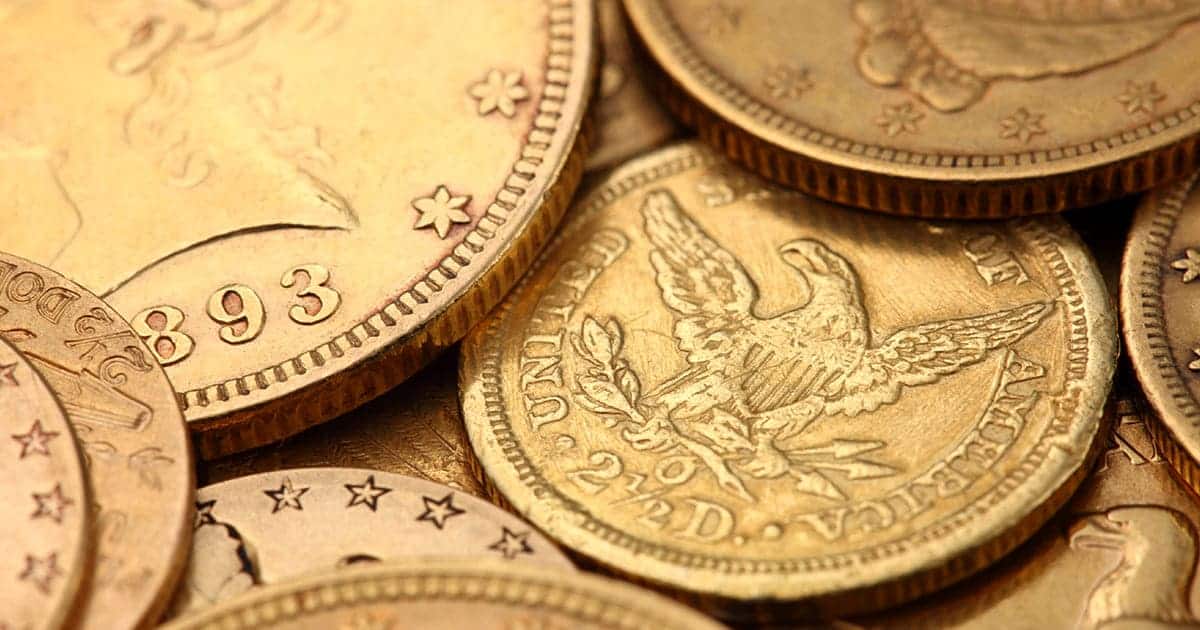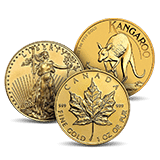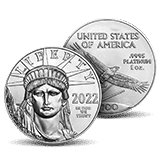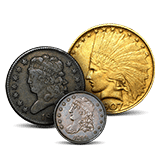
Learn About the Minting of Clark, Gruber, and Company
Nearly a decade after the California Gold Rush, gold was discovered in Colorado. In 1858, gold was found near the South Platte River, close to what was to become Denver. Because there was no one striking gold onto coinage, the medium of exchange was gold nuggets and gold dust.
It was also virtually impossible to transport gold nuggets and dust from Denver to Philadelphia or to transport gold coins from Philadelphia to Denver. Natural disasters, inhospitable terrain, war-like locals and robbery were the main reasons why that proved impractical.
The great need for gold coinage caused the Clark brothers and Emanuel Gruber to form a company to assay and mint coins. They purchased equipment and had dies engraved in Philadelphia and had it all shipped to Denver. By 1860, they were ready to begin operations.
They struck four different denominations – $2.50, $5.00, $10.00 and $20.00 gold coins. The coins looked very much like gold issued by the federal government, at least on the obverse of the coins. There was a depiction of Miss Liberty, facing left, with 13 six-pointed stars around the periphery and the date below “1860.” On Miss Liberty’s headband was inscribed “CLARK & Co.”
The reverse had a central image a depiction of an American Bald Eagle, complete with olive branch and arrows in its talons and a shield over its breast. Around the peripheries was inscribed “PIKE’S PEAK GOLD DENVER.” The denomination “2 ½ D.” was directly below the eagle.

The next coin minted was the $5.00 Gold coin version. It looked exactly like the $2.50 gold coin above, except that as a $5.00 gold coin it was larger and the denomination on the reverse was portrayed differently as “FIVE D.”

The third coin issued in 1860 was a $10.00 gold coin. It was larger than the prior two coins and it was distinctly from Colorado. The obverse was dramatically changed from the federal style of Miss Liberty to the Colorado style of a depiction of Pike’s Peak – the highest point in Colorado. Below the depiction was the city name “DENVER” while around the periphery is “PIKE’S PEAK GOLD” and the denomination was “TEN D.”
The reverse had a federal eagle with upraised wings, an olive branch and arrows in the talons, and around the periphery was ”CLARK GRUBER & Co., 1860”.

The final coin issued in 1860 was a $20.00 gold coin, which was larger than the $10.00 gold coin but utilized the exact same Colorado design. Likewise, the obverse design changed the denomination from “TEN D.” to “TWENTY D.”

By the time it was October of 1860, the Clark Gruber & Company minters found out that their coinage was too soft and didn’t handle well. In order to provide durability, they added a small amount of alloy for hardening the mixture.
In 1861, the company struck additional 1861-dated coins, in the same 4 exact denominations. The style of the coins changed, again, to look more like the federal coinage with Miss Liberty on the obverses and the American Bald Eagle on the reverse of each coin.
But by 1862, the company had stopped making coins and began to strike bars or ingots. Both the United States and our trading partners in Europe all traded the Clark Gruber & Company bars at the value stamped on each. In 1863, the federal government purchased the assets of the Clark Gruber and Company and opened a federal assay office in that same exact location. But by 1906, the Assay office had been closed and the location became the Denver Branch Mint of the United States Treasury Department.
All surviving Clark, Gruber & Company gold coins struck in 1860 or 1861 are rare.
| Date | Type | Mintage | Fine Value | Unc Value |
| 1860 | $2.50 Gold | Unknown | $2,500 | $14,000 |
| 1860 | $5.00 Gold | Unknown | $2,750 | $14,500 |
| 1860 | $10.00 Gold | Unknown | $10,000 | $60,000 |
| 1860 | $20.00 Gold | Unknown | $75,000 | $700,000 |
| 1861 | $2.50 Gold | Unknown | $2,000 | $14,500 |
| 1861 | $5.00 Gold | Unknown | $2,500 | $40,000 |
| 1861 | $10.00 Gold | Unknown | $2,750 | $30,000 |
| 1861 | $20.00 Gold | Unknown | $25,000 | $250,000 |
Expand your collection today and shop for an 1861 $10 Clark Gruber Colorado Gold Rush.




